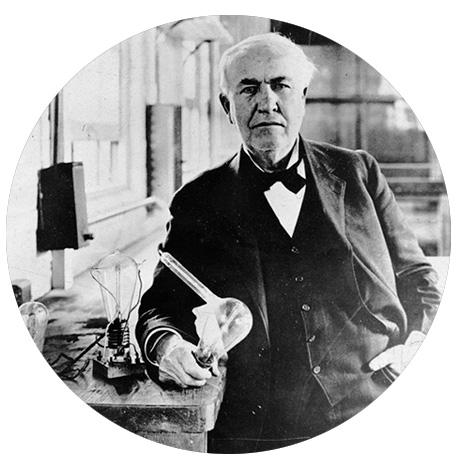Duke Energy’s Bold, $25 Billion Plan to Modernize the Power Grid
A plan to modernize the energy grid means more than replacing substations and transmission lines. It will help you control your electricity use and save you money.
About the only time most of us consider the energy grid is when there’s a major power outage or a blackout in some place like New York or California. That’s in the past. As time goes on, we’ll be interacting with the grid more and more. This grid modernization will give customers more tools to control how much energy they use, all from a connected device such as a smartphone.
That’s why Duke Energy is investing $25 billion over the next 10 years in its service areas in the South and Midwest – $13 billion in North Carolina alone – to replace the aging power grid infrastructure (such as transmission lines, transformers, substations). The project will add almost 14,000 jobs in North Carolina, generating $10.4 billion in wages.
Investor-owned energy companies spent $53 billion on the grid in 2016, and this year, 37 states and the District of Columbia are working on modernizing the grid, according to a report by North Carolina State University.
The goal is to make the system more secure and resilient, decrease outages and enable faster restoration, integrate more renewable energy such as solar and wind, and give customers more choice, convenience and control over their energy use.
But first, a little grid bio.
The grid has been around since Thomas Edison.
We’ve relied on the grid since the 1880s, when Thomas Edison brought electricity to New York City. To light up New York, his company built power plants and substations to send electricity over wires and into brownstones and office buildings. Essentially, we’ve been using the same method ever since.
In the Edison plan, utilities make electricity and send it to you, the customer. It is a one-way system. That was just fine for more than a century. Back then, utility company customers weren’t installing rooftop solar panels or cooling down McMansions.
Time for a change?
Duke Energy’s $13 billion Power/Forward plan in North Carolina will, among other things, give customers the ability to control more of how they interact with the energy company.
Customers in Indiana, Ohio and parts of the Carolinas have already been updated with smart meters. That technology allows them to get near real-time energy use information and adjust as needed to save money. They can pick the due date for their bill. And in some areas, they’re able to pay ahead of time for the amount of electricity they think they’ll need.
Let’s talk about infrastructure
“We think about the grid as the backbone of the new digital economy,” David Fountain, Duke Energy’s North Carolina president, told the Charlotte Business Journal. “So to keep up with the growth in this state − we’re growing at the fourth-fastest rate in the nation − we need to go ahead and make this investment.
“A lot of our grid is reaching the end of its useful life. And even though we have been investing about a billion dollars a year, we really need to accelerate that investment to prepare the grid for this new digital economy.”
NC’s landscape is beautiful and whether you’re in the mountains or the coastal plains, trees are the reason. And to help preserve as many of them as possible, Duke Energy plans to spend $4.9 billion to move thousands of miles of the most susceptible overhead lines underground.
The company will also make the grid safer from threats such as animals (who get into substations and transformers), hackers (who try to get into computers) and flooding (which can take some substations out of service).
We want clean, safe and reliable energy. The improvements are expected to reduce the number of power outages over the next 10 years by 50 percent.
That takes us back to today
If you live in North Carolina, chances are you’ll see work on Power/Forward going on. Crews have already been installing smart meters at residences and businesses. You’ll see other work, too, updating substations and transmission lines, for example.
Thomas Edison, who died in 1931, advocated harnessing the power of the sun and wind, and today we have the technology to do that. The smart grid makes it easier and more efficient than Edison’s grid, which transformed life around the world.
Edison was a great inventor, and over the next 10 years a lot of work will be going on to bring his ideas into the digital universe.
What’s Power/Forward Carolinas?
Here’s an overview of Duke Energy’s smarter energy future plan to spend $13 billion in North Carolina to improve the energy grid.
$4.9 billion: Burying power lines
Thousands of miles of hard-to-access overhead power lines – 10 to 20 percent of the least reliable vegetated overhead lines – will be moved underground. This will significantly reduce outages and interruptions and can speed restoration.
$2.2 billion: Transmission improvements
This includes substation and transmission line upgrades, flood mitigation, physical and cyber security.
$3.5 billion: Distribution system security
- 400,000 transformers will get technology to prevent animal interference and lightning strikes.
- 8,000 miles of deteriorating cable will be replaced.
- Physical and cyber security enhancements will protect against hackers and occurrences like animal intrusions and vandalism.
This will help prevent outages, especially during storms, and provide faster restoration when outages occur.
$549 million: Advanced metering
Smart meters will be installed to enable automated meter reading, remote connects/disconnects and quicker outage detection.
$545 million: Communication
New and replacement fiber, microwave and towers will be installed. Transmission and distribution line devices will be upgraded from 2G/3G to 4G LTE.




